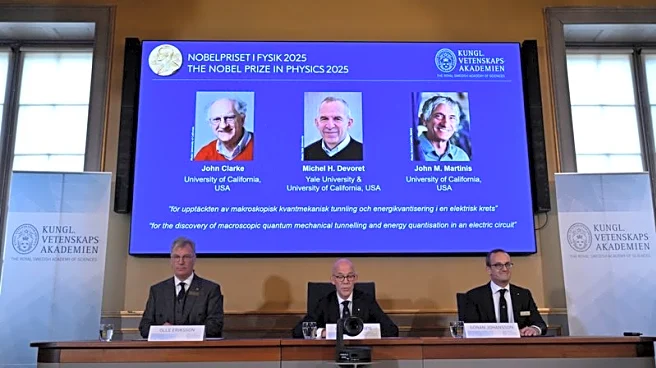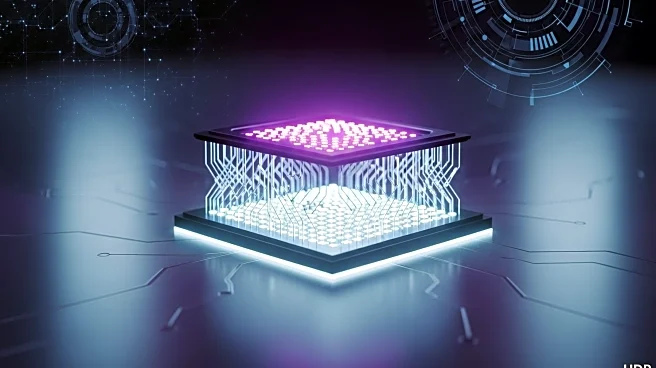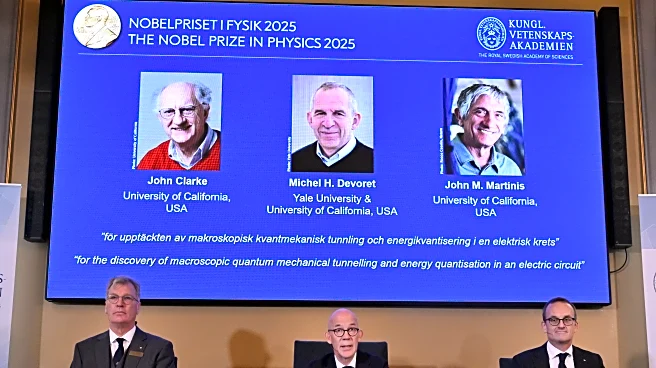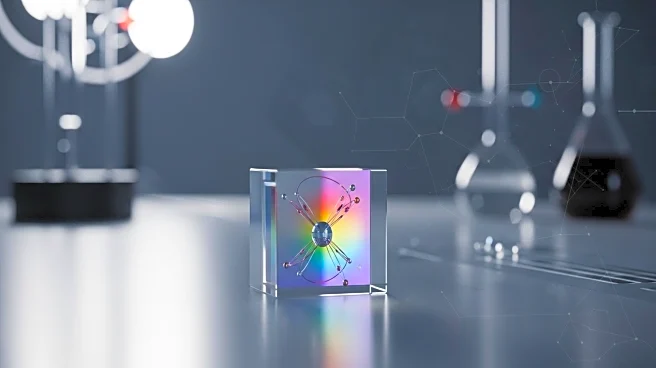What is the story about?
What's Happening?
Researchers from the Hebrew University of Jerusalem and Humboldt University in Berlin have made significant advancements in quantum technology by developing a method to capture nearly all the light emitted from diamond defects known as color centers. These defects, specifically nitrogen-vacancy (NV) centers, are crucial for quantum technologies such as quantum sensors and secure communications. The team achieved this by embedding nanodiamonds into specially designed hybrid nanoantennas, which guide the emitted light in a specific direction, significantly improving photon collection efficiency. This breakthrough was published as a Featured Article in APL Quantum.
Why It's Important?
This development is pivotal for the advancement of quantum technologies, which rely on the efficient collection of photons to function effectively. By improving photon collection to up to 80% at room temperature, the research paves the way for practical applications in quantum computing, secure communications, and ultra-sensitive sensors. The ability to integrate this technology into real-world systems more easily due to its chip-based design and room temperature operation could accelerate the deployment of quantum networks, offering faster and more reliable communication systems.
What's Next?
The research team anticipates that their approach will facilitate the development of practical quantum devices. The improved photon collection efficiency could lead to advancements in secure quantum communication and the creation of ultra-sensitive sensors. As the technology is further refined and integrated into existing systems, it may lead to the establishment of more robust quantum networks, enhancing data security and processing capabilities.
Beyond the Headlines
This research highlights the potential of diamonds beyond their traditional use in jewelry, showcasing their role in cutting-edge technology. The integration of quantum technologies into everyday applications could lead to significant shifts in data security and processing power, impacting industries ranging from telecommunications to national security.
AI Generated Content
Do you find this article useful?















